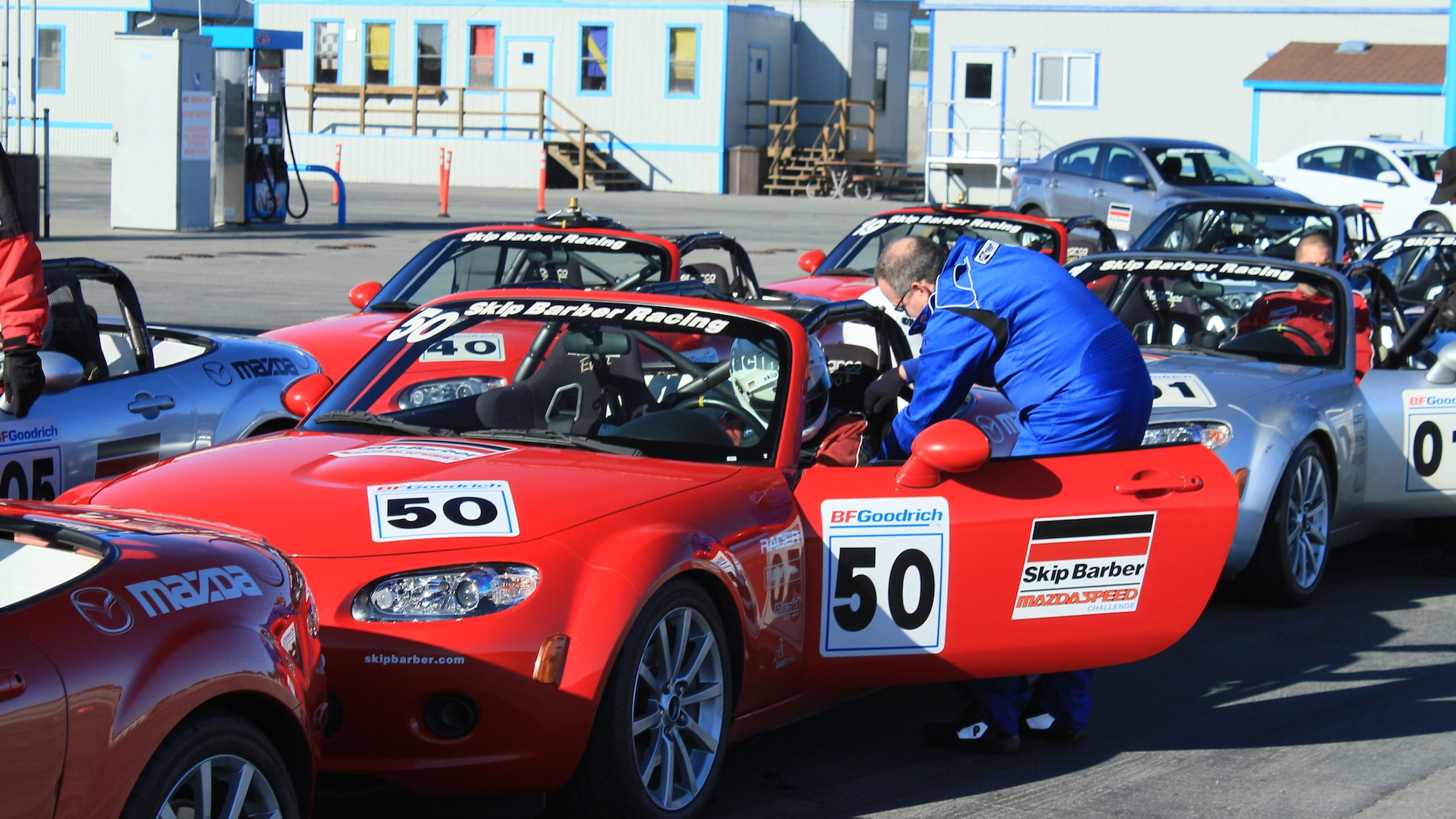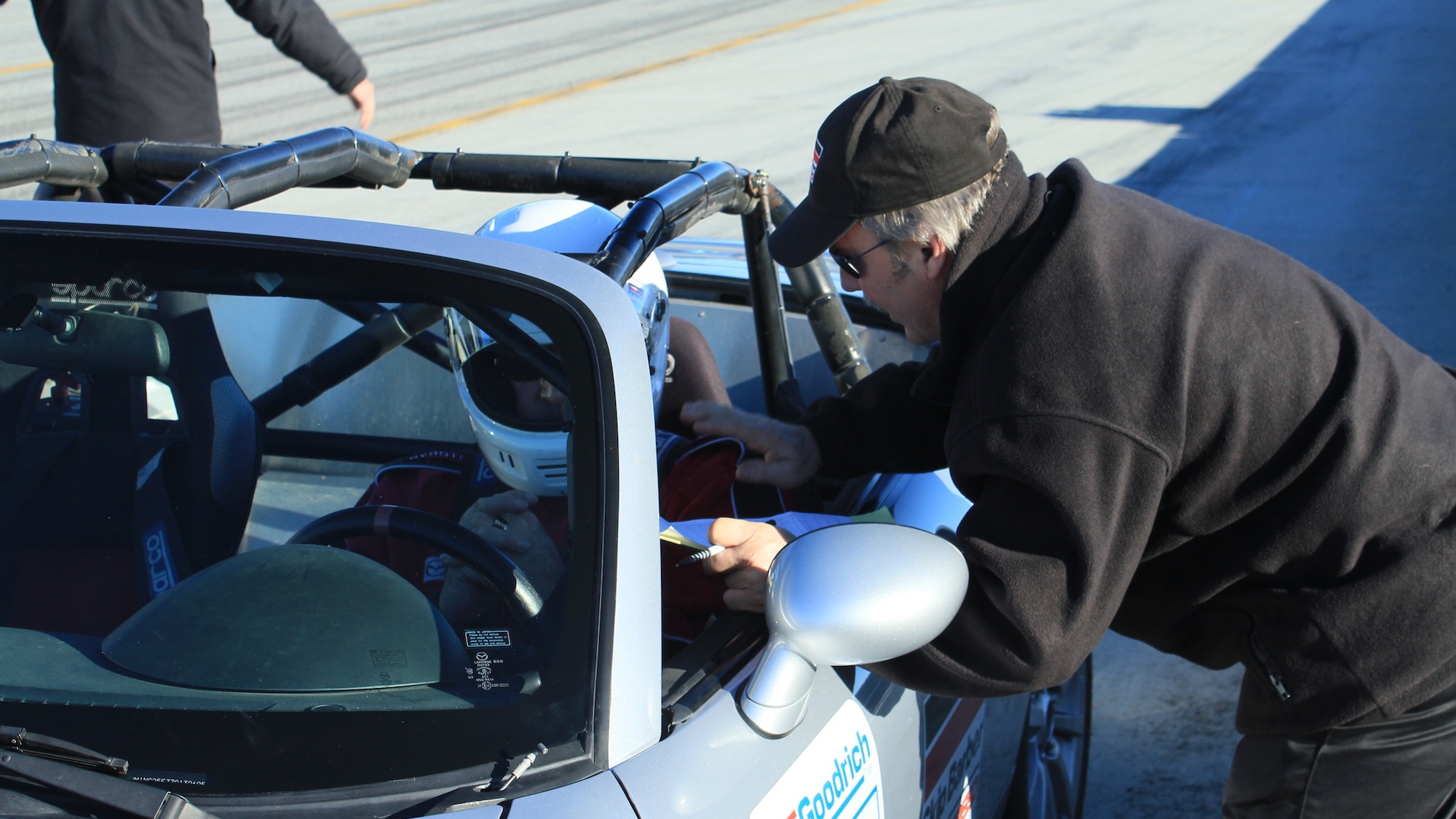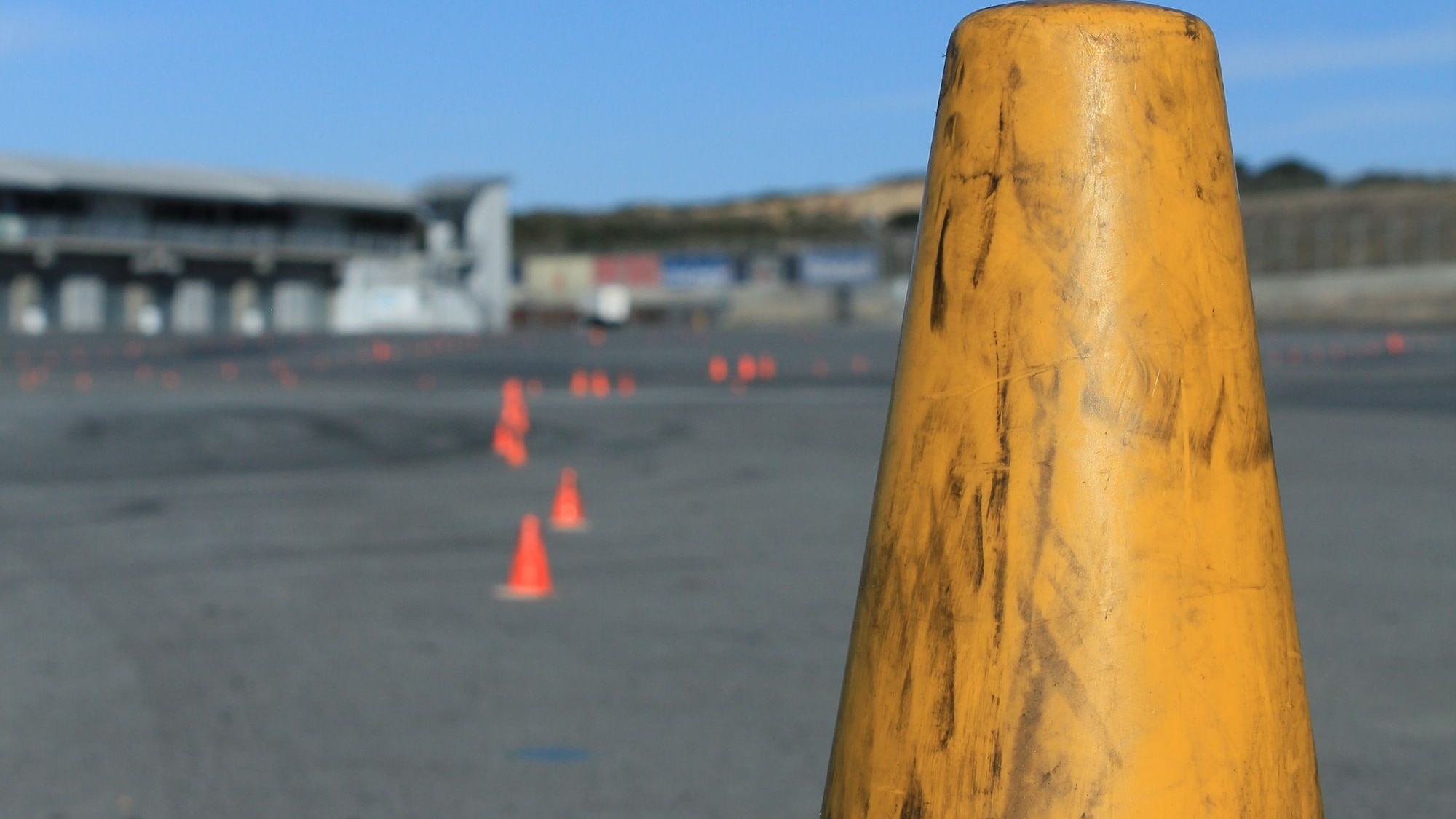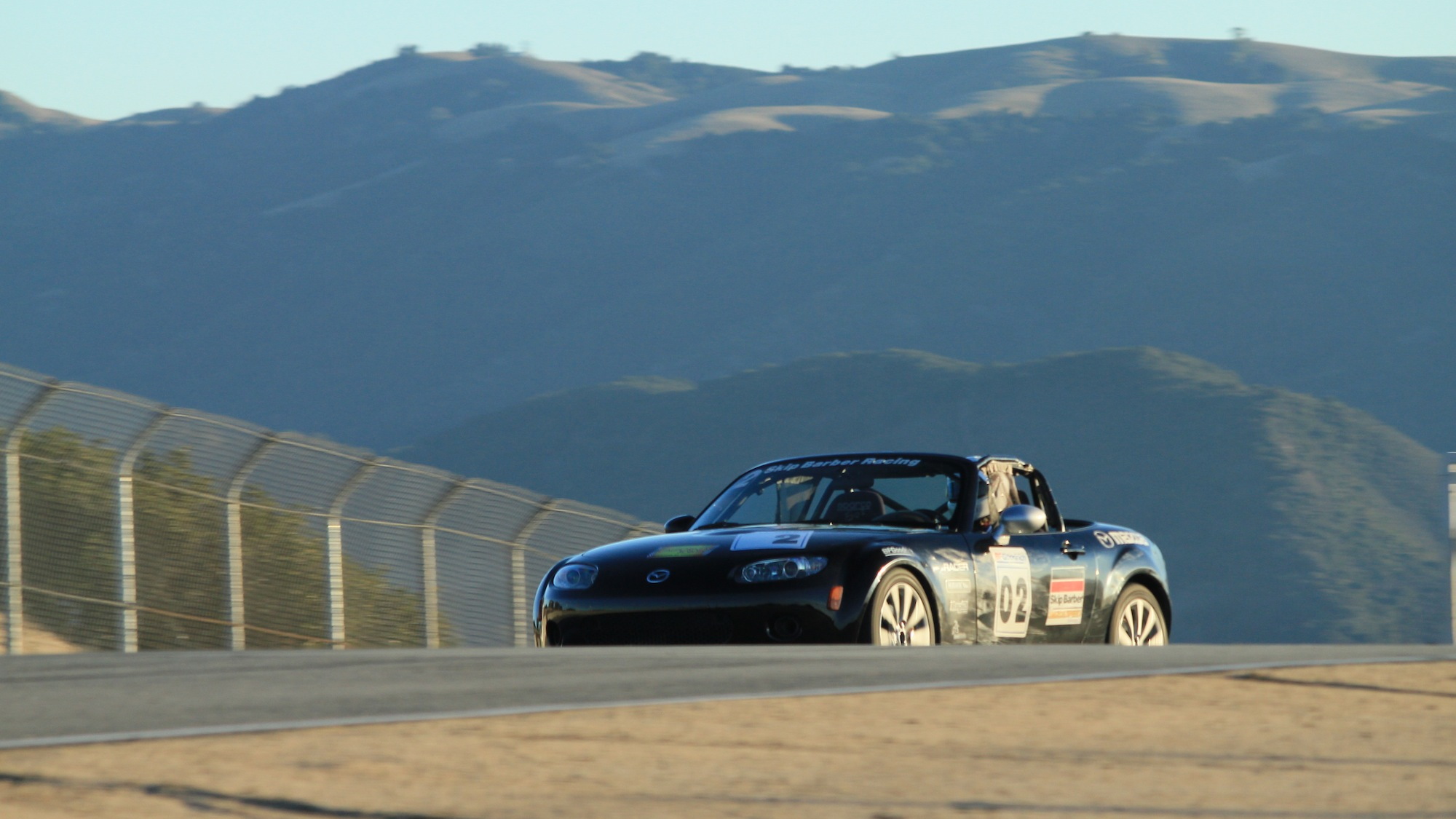Skip Barber's three-day Mazdaspeed Racing School, taught in the MX-5 Cup race car by racers for racers (and for those just interested in learning more about racing), is an experience no driving enthusiast can fail to enjoy. Best of all, the instructors are not just great drivers, but great observers and teachers, and will readily tailor the curriculum to your level of experience, talent, and desire to learn.
That last factor should be considered seriously by anyone looking to take a driving school. If you're just there to show off how awesome you already are, chances are good that you won't just be wasting your time (and the instructors') but that you'll also make use of the optional damage insurance. You did spring for the $500 insurance, right?
You might not end up bending any sheet metal should you charge ahead with little heed for the instructors, but if you're taking the school at a track like Laguna Seca, where I just completed the three-day school in the week following Christmas, you'll almost certainly end up in the gravel waiting for the tow truck, or "hook." Just ask several of the Skip Barber Formula car students that ran during our school--and a few of the MX-5 Cup students, too.
Your faithful author wasn't one of them, fortunately, though I did my best to ramp up the speed and aggression to near-race levels over the course of the three-day school. By the end, I was lapping at 1:53.xx or thereabouts, despite being limited to a maximum of 6,000 rpm of the 7,200 rpm available in all but a few places on the track. That's just a few seconds off of fast-lap pace in the hands of the pro-racer instructors, and a good ten seconds per lap quicker than when I took my first tentative runs at the circuit. In other words, if you come to the Skip Barber racing schools to learn, you will learn, quickly, and you'll approach the limits in a safe, controlled manner.
Skip Barber Mazdaspeed 3-day racing school
So what will you be driving if you opt for one of the several MX-5 Cup-based schools? A race car based on the third-generation, or NC, Mazda MX-5, in very similar trim to the Playboy MX-5 Cup cars (and Skip Barber's own MX-5 Cup series cars). The exception being that 215-mm BF Goodrich g-Force Sport street tires instead of racing slicks.
The street tires are chosen in part for their lower overall grip, but also for their wider range of acceptable slip angles, both of which help the driver to recognize mistakes without penalizing through sudden loss of traction that can result in severe offs and bent metal.
Otherwise, you're looking at an MX-5 with a racing header, no catalytic converters, a roll cage, a relatively high-end set of dampers, upgraded springs, and a racing alignment. With about 200 horsepower at the crank and 2,400 lbs at the curb, it's not exactly a rocketship, but its nimble handling and short wheelbase will quickly outpace the skill of most that drive it for the first time. Once you get comfortable with it, however, it becomes a willing office for the business of speed, compliant and predictable.
Skip Barber Mazdaspeed 3-day racing school
Each day starts in the class room, heads out onto the skidpad or the circuit, returns to the class room after lunch, and goes back out once again. Alternating between learning theory and applying it is part of the success of the program, helping to iron out the differences between what you think should be happening and what really is happening on track.
Combined with near-instant feedback after each lap or lapping session from a handful of instructors, this helps drill down quickly to the things you're doing well in the car, and the things you need to improve. In my case, line, throttle application, and general braking were OK, but I wasn't releasing the brake (trail braking) smoothly enough. I spent almost the entirety of the course working on it, eventually nailing it more often than not.
For others, coaching on line, entry speed, cornering speed, heel-toe downshifting, braking effort (getting the most braking done at the start of the braking zones), and much more were all on the table--and always being checked even for those of us that were getting it right most of the time. The attention to detail, and the amount of detail the instructors can derive from just watching you as you pass their corner, is not just amazing, but amazingly helpful in improving your driving.
It's often impossible to really know what you're doing in the car in any given moment, especially if you're operating at a subconscious level. Having the immediate feedback and recommendations for improvement/corrections/different techniques to try for the next lap or session circumvents the tail-chasing we all do when self-analyzing.
It's worth noting that this curriculum and program has spawned the careers of a number of professional racing drivers, including some of the school's own instructors. Along the way, you'll pick up dozens of valuable but slightly counter-intuitive nuggets of wisdom, like "brakes are dangerous, the throttle is safe," and "it's better to go in slow and come out fast than go in fast and come out dead."
Skip Barber Mazdaspeed 3-day racing school
The three-day school's $4,400 cost is definitely a hurdle to overcome for many, but taken in the context of racing expenses, it's a rather modest amount--the price of a decent set of coilover shocks and hardware, for example--and it will return dividends in terms of lap time and safety well beyond any equipment upgrade, because it's an upgrade to the most important piece of equipment in the car: the driver.
For the casual enthusiast, the race school is probably too much. Too much instruction, too much intensity, too much expense. For the amateur racer, autocrosser, or track day enthusiast, it's a solid investment in improving your skills. And for the aspiring racer looking to move into the semi-pro and pro ranks, it can be a great intro to the basics you'll need to master to get your foot in the door or an opportunity to push already-developed skills to new levels of polish and precision--but you'll need to work on marketing, sponsorships, media relations, and all the other skills that go along with acquiring a pro race seat elsewhere.
At the end of the three-day school, as you strap in to take to the track in your final lapping session, you'll probably be amazed at how far you've come (perhaps in spite of yourself) in such a short time. No time to reflect on that now, though; cinch up those belts, be sure the steering wheel is all the way on, adjust your mirrors, visualize your line and remember: in slow, out fast--in fast, there's a $3,000 deductible on your insurance policy. You did get the insurance, right?
Skip Barber provided free entry to the school for the purposes of this article. Video provided by Helix. All other expenses were paid by the author.
For a look at Skip Barber's more road-oriented High Performance Driving School, read our three-part review here.

Skip Barber Mazdaspeed 3-day racing school






